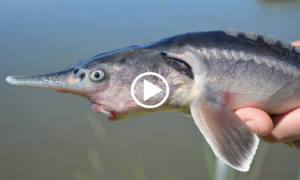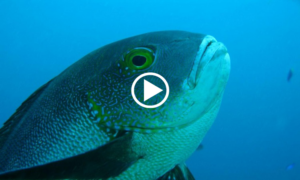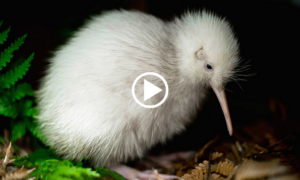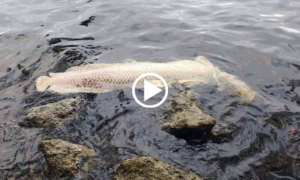Don Marx, a marine biology student from Cape Town, caught a carpenter fish with a stray tongue in his mouth while fishing near Cape Agulhas.
Don had heard of this louse but had never seen it in the wild. But after sending the photo to Professor Nico Smit, a zoologist at Northwestern University, Don was delighted to discover that this particular louse had never been photographed before.
“As a marine scientist and have been fishing since I was a kid, I’ve seen quite a few parasites on fish and sharks,” Don said. “But nothing can really surprise me like the moment I opened the mouth of a carpenter fish and saw blue eyes like aliens staring at me. It’s a tongue-eating louse that only lives in the fish. Carpenter “.
Tongue-eating lice have been known for decades, but in recent years researchers have started to delve deeper into their life cycle and behavior. They suggest that all tongue lice begin their life cycle as males, drifting in the ocean and seeking a host to attach to. Each of the 280 species of tongue lice has been identified, apparently targeting a single species of fish.
Meanwhile, the male louse transforms into a female, its body several times larger with legs to attach to the fish’s mouth. During this time, his eyes shrink as he no longer needs to be positioned. When the tongue atrophies and falls out due to anemia, the lice attach themselves to the base of the tongue and completely take its place.
According to a 1983 study, tongue lice replace the mechanical function of the tongue by helping fish to retain their prey in the nasopharynx while eating. It is the only parasite that completely replaces the function of an organ in the host. Parasitic lice will live in the fish’s mouth for its entire life, feeding on the fish’s blood and mucus, but not causing any further damage.
If a female louse is already there, the male louse will attach itself to the gills of the fish. It will live its entire life in the gills of fish, occasionally mating with female lice, giving birth to young which swim through the gills after spawning to find a host of their own. A fish can harbor one female and several males. These fish are often underweight due to many blood-sucking parasites.
In laboratory studies, tongue lice only left the fish’s mouth when the host died, often lingering on the fish’s head or body. However, researchers are not sure what exactly happens to tongue lice if their host dies in the wild. It is likely that the death of the host also results in the death of parasitic lice.
Hybrid fish between two “living fossil” species
The oldest fish in the world lives in coral reefs
Very rare white kiwi bird dies
Amazon Arowana makes an appearance in Florida







